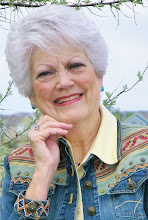Middles answer "What is the problem and how does it get solved?" The middle adds complications, unexpected happenings and seemingly insurmountable problems. In another word, CONFLICT. After the five "Ws" of writing, who, what, where, when, why, comes how. The how happens suspense. Not like a mystery, but suspense that builds to solve whatever problem the writing entails. Action and tension contribute to suspense.
Action may go up, dip a little and head up again until it reaches a point of no return, a breaking point, the darkest moment. For every action there is a reaction.
Now some basics for writing the story.
Who is your audience? To get across an idea, pretend you are talking to one member of that audience. What does that person need to know about the story you are telling them? Where might they ask a question? Answer the questions before they have a chance to interrupt and ask.
As you write, be sure to have a dictionary or Flip Dictionary/Thesaurus handy. A Flip Dictionary is a form of Thesaurus. It lists words similar to ones you use in your story and helps eliminate "echo" words (often repeated words). These resources allow you to be specific in your writing.
In being specific, you'll need to replace “it” with the name of something. Be aware that new writers, as well as experienced, sometimes place "it" to refer to the wrong noun. If you substitute the name of something for "it", the message will be clear.
Say what you mean. Adjectives and adverbs can be misleading. For instance: "Our first cruise was incredible." What does incredible mean? Good or bad? Actually, we looked out the back of the ship at blue skies filled with fluffy white clouds, unlike the sky out the front – black. During the night, waves swelled to 48 feet and continued throughout the day. We rode the crests of Hurricane Gordon. Yes, the trip was incredible, but a better word to describe the trip adds the proper meaning. Be specific.
Next blog will talk about the often used term "Show don't tell."
Thursday, February 3, 2011
Subscribe to:
Post Comments (Atom)




Thank you for your fantastic advice!!!
ReplyDeleteLove, Leilani
I love your artwork in "How the West was Drawn"! Its so beautiful and inspirational. I especially love the pictures with buffalo in them. Congrats!
ReplyDeleteLove, Leilani
Thank you for writing Paragraph 6! I completely understand, because I often have to tell my classmates not to use the word "it" so much.
ReplyDeleteLove, Leilani
Leilani, you read the posts very fast. Now I understand why you are a 4.0 student.
ReplyDeleteLove,
Nana
Hi Linda,
ReplyDeleteI found your blog after reading your interview on Patricia Stoltey's blog.
Thanks for the writing tips.
Donna V.
http://donnasbookpub.blogpsot.com